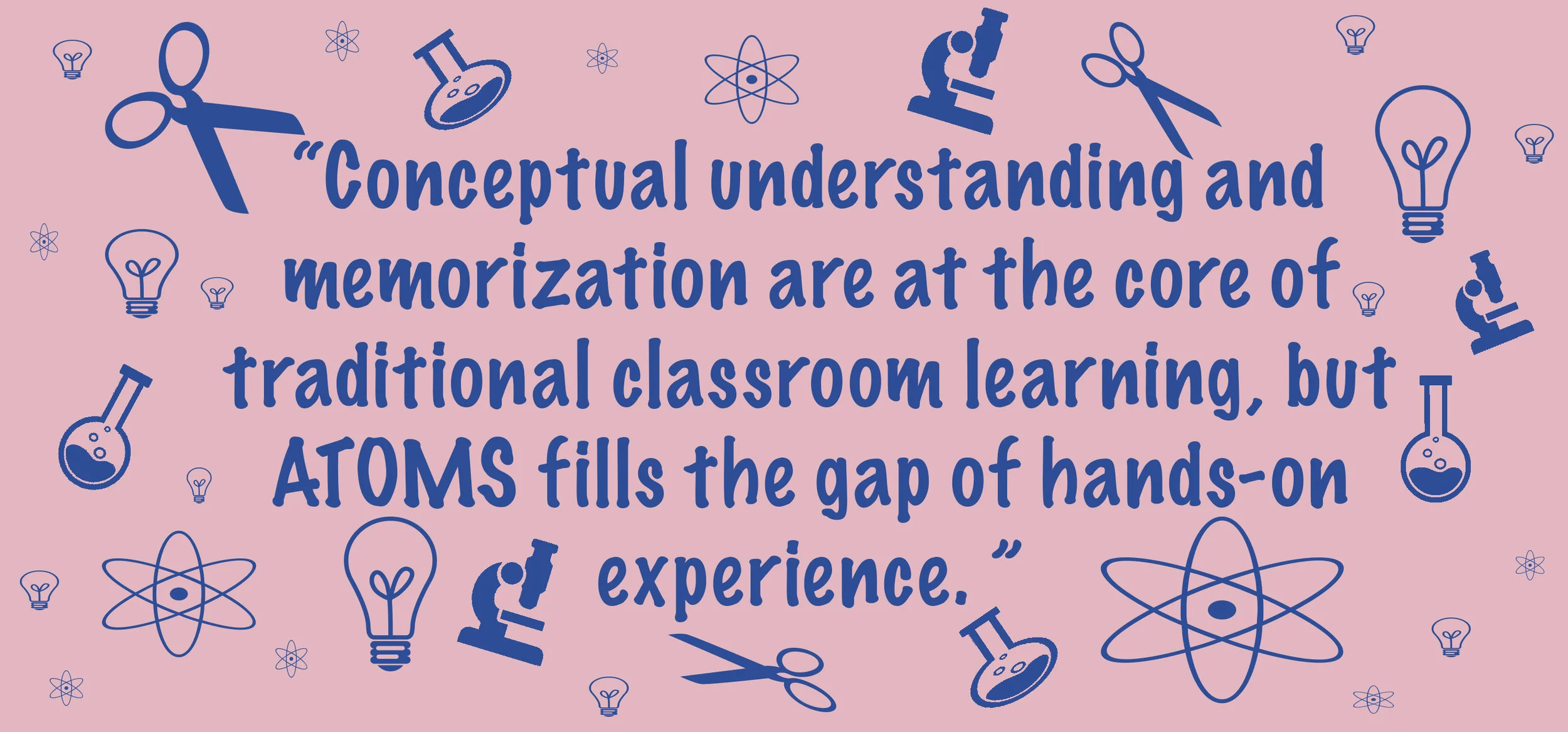ATOMS Program Matters for Students and Science
by Alyce Palko
A typical fifth-grade science class involves a lot of worksheets, taking tests, and homework assignments. The topics of their science class are interesting, but the students don’t scream in excitement every time they get another worksheet. Kids would much rather complete a project, like exploding a baking soda volcano or making their own ice cream. For some Pennsylvanian kids, this educational dream becomes a reality every summer, through the Advanced Training for Outstanding Mathematics and Science (ATOMS) program.
The ATOMS program serves elementary and middle school students who have high math and science grades. The program is provided by Appalachia Intermediate IU8 and serves four counties in southwestern Pennsylvania. Besides enhancing students’ STEM education, the program allows students to socialize with their high achieving peers, and to build their sense of self.
Kids love the ATOMS program’s hands-on activities. One ATOMS scholar, Josh, said his favorite activity was building and testing a slingshot, which taught him about physics concepts. Another student, Savana, enjoyed learning about volume by building a tower from straws and tape, filling it with coins, and weighing it. By learning hands-on skills, students are given an educational advantage. Ideas and memorization are at the core of traditional classroom learning, and ATOMS fills the gap of hands-on experience. Years before they enter college, the kids participate in tactile activities that form a foundation for future STEM education.
Because the kids are highly engaged, they remember much of what they learn at ATOMS. This can help them in school, says Lisa Prebish, Gifted Support teacher at Penn Cambria School District. In the classroom, she has noticed students referring to skills they learned at ATOMS. One popular ATOMS activity is the egg drop, in which teams of students must construct a container that will protect their egg from breaking, as it is dropped from a ladder. This project might help students later in their education, Prebish says. A main part of Penn Cambria’s home economics course is the “egg baby” project. For a week or two, students become the “parents” of a fragile egg, which they must carry everywhere. Students might use their ATOMS egg drop container design to develop a container for their “egg baby,” protecting it from harm and succeeding in the assignment.
The ATOMS program also gives kids a chance to socialize. ATOMS scholars are unlikely to feel socially ostracized because their peers are of similar academic abilities, Prebish notes. Unlike in a regular classroom, high-achieving kids are unlikely to be bullied. Students feel accepted because they are with like-minded peers, which allows for intellectual and enthusiastic conversations about science. The program also brings kids, and ideas, from different schools together, since kids can choose which site to attend. Looking back on his ATOMS experience, Josh said, “You have people that really want to be there… and it’s really a great experience to talk to people that are outside of your school, but kind of think similarly to what you do.” The program encourages group work, and the projects are often completed via team effort. Because the kids establish a rapport, group work is productive and enjoyable. Savana said the program “was fun because you got to hear about other people’s ideas and not just your own.”
Another focus of the ATOMS program is fostering a sense of self in students. By working together on science projects they love, students can be confidently creative. They are encouraged to try new things, share their ideas, and accomplish goals. A third student, Alexa, loved that she got to be creative in her ATOMS activities. She said, “You got to be messy and work together and solve things… You got to eat in some of the classes, and do arts and crafts, and make messes, and it was just a lot of fun.” The program shows kids that being “messy,” whether by cluttering up a workspace or by making mistakes in the process of solving a problem, is totally acceptable. They learn that creativity is a necessary part of the scientific process, and that science is a part of daily life. For example, Prebish recalled an ATOMS program that focused on cooking. Students spent the week creating elements of an Italian dinner and learning about the science of the kitchen. At the end of the week, they had a feast. By cooking a meal together as a science project, the students learned that STEM is applicable to both a laboratory and a kitchen.
By participating in the program, ATOMS scholars grow in their love of science. The kids learn that science is much more than calculating numbers or completing a worksheet. They realize that they can build machines and combine ingredients to do amazing tasks, and they are introduced to other bright minds of their generation. Students of ATOMS experience science with an enthusiasm that will help them to become future community leaders. To ATOMS program scholars, science really matters.
